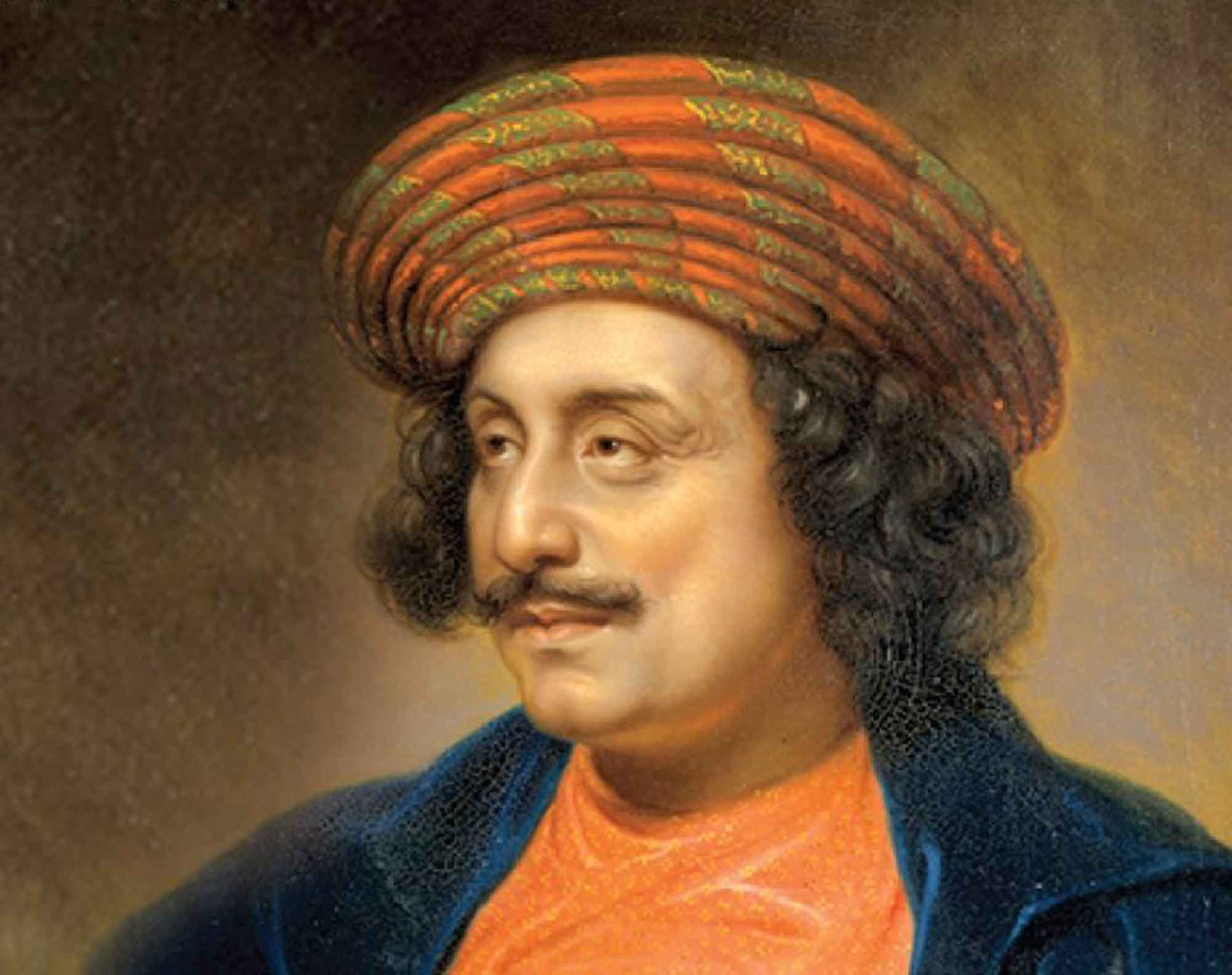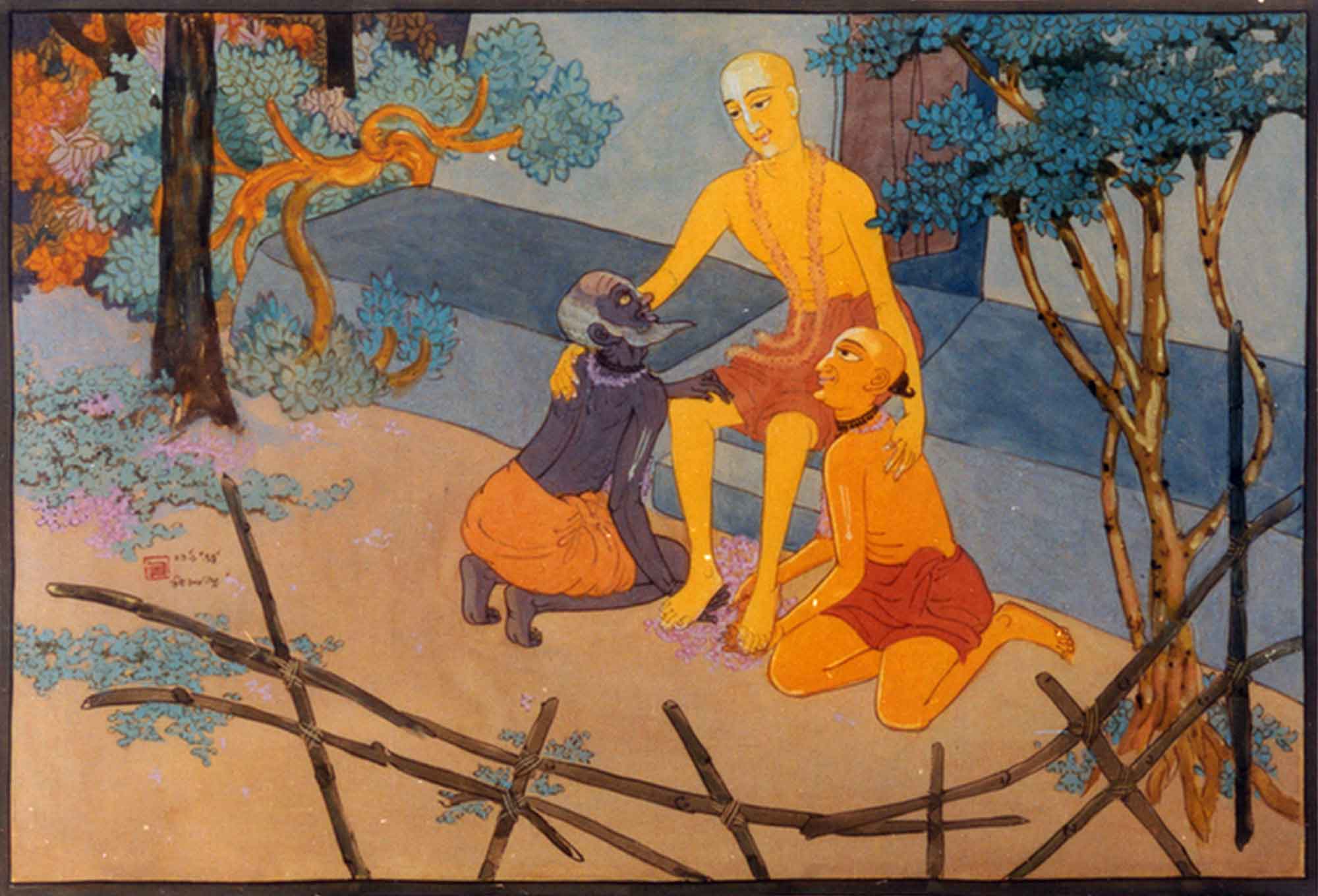Overview
Samālocana (A Book Review) was first published in Sajjana Toṣaṇī Vol.7 issue 4 in 1895. Śrīla Bhaktivinoda Ṭhākura reviews three books – a commentary on Śrī Nityānandāṣṭaka, a publication of Śaṅkarācārya’s Moha Mudgara, and a composition about the glories of the Holy Name.
(translated by Swami B.V. Giri)
Śrī Nityānandāṣṭaka with Commentary
The first śloka:
śarac-candra-bhrāntiṁ sphurad-amala-kāntiṁ gaja-gatiṁ
hari-premonmattaṁ dhṛta-parama-sattvaṁ smita-mukham
sadā ghūrṇan-netraṁ kara-kalita-vetraṁ kali-bhidaṁ
bhaje nityānandaṁ bhajana-taru-kandaṁ niravadhi
(“The brilliance of His pure effulgence defeats the autumn moon. Walking like an elephant, He is intoxicated with hari–prema. He possesses supreme purity. He has a smiling face and His eyes roll in ecstasy. His hand holds a staff for beating the age of Kali. I continuously worship Nityānanda, the root of the tree of bhajana.”)
This is composed by Śrīla Kṛṣṇa Dāsa Kavirāja Gosvāmī. Śrīyuta Kṛṣṇa-Candra Siṅgha Kavya-ratna has written the Sārārtha-bodhinī commentary to it. This aṣṭaka is a prayer to Śrīmat Prabhu Nityānanda. Devotees know how sweet Kavirāja Gosvāmī’s compositions are. The commentary written by Kavya-ratna Mahāśaya is simple and understandable to all. There is one meaning in favour of Śrīman Nityānanda, and a second meaning in favour of Śrīmad Gaurāṅga. We wish that he would write a commentary on the epic poem Śrī Caitanya–caritāmrīta in this manner so that the devotee world would be indebted to him.
Moha-Mudgara
Śrīyuta Ṭhākura Kṛṣṇa-candra Siṅgha-Varmā, a resident of Āgarṭalā, has published a Sanskrit commentary and a Bengali translation of this book. The book, Moha-Mudgara signifies vairāgya (renunciation). The author of this book is Śrīmad Śaṅkarācārya. There are 16 stanzas in this book. The glories of bhakti are described nowhere. We do not understand what benefit the jīva will get from teachings about dry asceticism. When bhakti-rasa arises, the renunciation that naturally manifests in the human heart is the intrinsic and perfect vairāgya of the jīva. As long as there is no mercy from Bhakti Devī, the pure vairāgya that can appear in one’s heart cannot even be imagined. It is written in Śrīmad Bhāgavata:
vāsudeve bhagavati bhakti-yogaḥ samāhitaḥ
sadhrīcīnena vairāgyaṁ jñānaṁ ca janayiṣyati
(“When bhakti-yoga is fully dedicated to Vāsudeva, it gives rise to jñāna and vairāgya.” – Śrīmad Bhāgavatam 4.28.38)
In the Gīta śāstra it is said, paraṁ dṛṣṭvā nivartate (“By experiencing the Supreme, one gives up lower things.”– Gītā 2.59). It is seen in all these great teachings that without kṛṣṇa-bhakti, any vairāgya that appears in a jīva can never be firm. Kṛṣṇa-candra Siṅgha can especially be praised for his explanation of Moha-Mudgara, defending bhakti. Śānti-śataka composed by Śilhaṇā Miśra should be explained in the same way.*
* Translators Note: Śilhaṇā Miśra was the previous name of Śrīla Bilvamaṅgala Ṭhākura, who wrote Śrī Kṛṣṇa Karnāmṛta. Prior to this, after accepting sannyāsa, he composed Śānti-śataka (‘One Hundred Verses on Tranquility’).
Nāma-kaivalya Śataka
We have received a small book called Nāma-kaivalya Śataka, written by Śrīyuta Prabhu Nīlakānta Gosvāmī. Each śloka in this book ends with the line harer nāmaiva kevalaṁ. It is the greatest duty of the descendants of the Supreme Lord to reveal the glories of hari-nāma. The composition is superb. Its bhāva is beautiful in all places. The glories of the Name have been described in detail. If Prabhupāda (Nīlakānta Gosvāmī) could also give a Bengali verse under each śloka explaining the meaning, it would be of special service to the Bengali women in society. Our tongue continuously sings the following two ślokas:
nāmaiva paramo yajño nāmaiva paramaṁ tapaḥ
jñānam yat-paramaṁ loke harer nāmaiva kevalaṁ
(“The Name is the greatest yajña. The Name is the greatest austerity. The greatest knowledge in the world is the Name of Hari alone.”)
tṛṇī-kṛtya jagat sarvaṁ rājate sakalopari
cid-ānanda-mayaṁ śuddhaṁ harer nāmaiva kevalaṁ
(“The Name makes the whole world seem as insignificant as a blade of grass. The Name outshines everything. The Name is fully comprised of spiritual bliss. The Name of Hari alone is pure.”)













